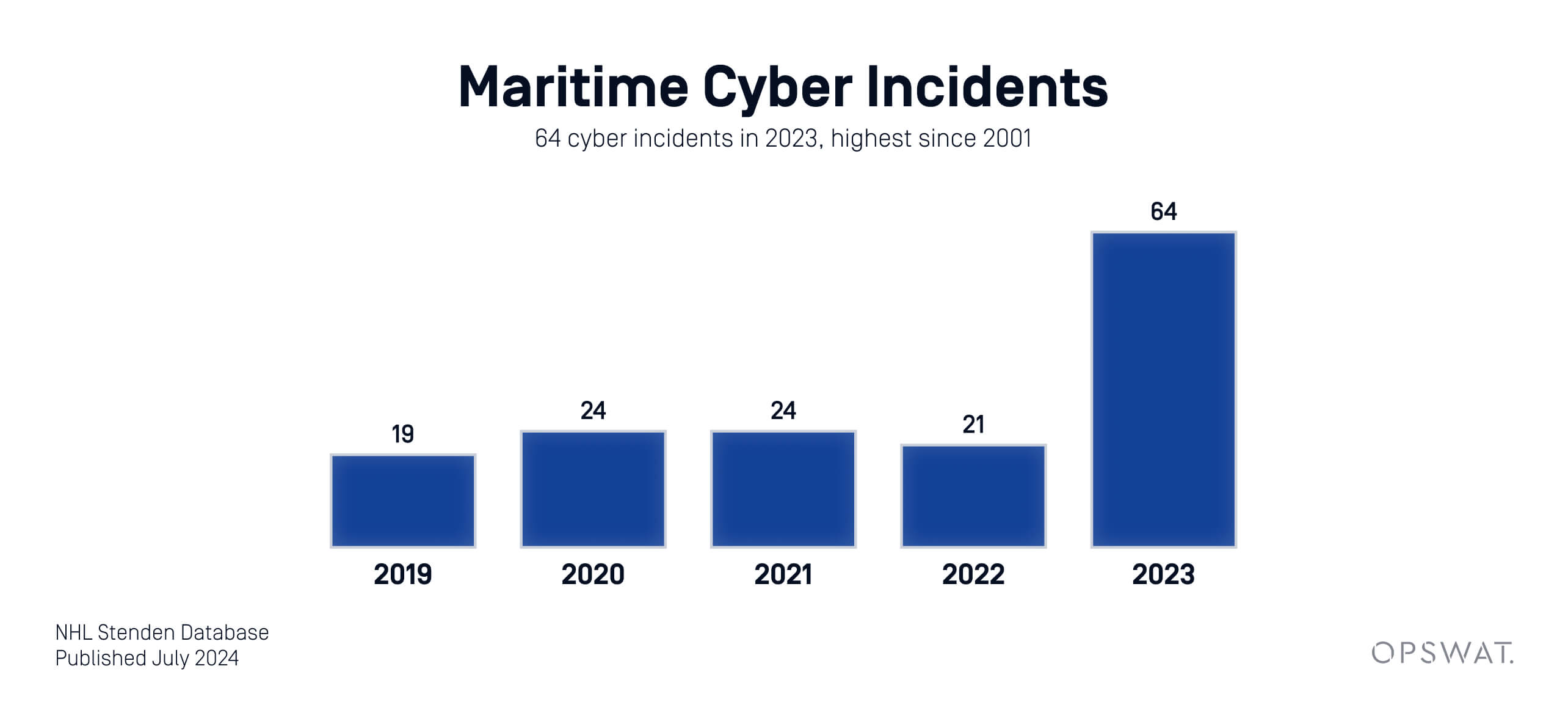The maritime industry has become a prime target for cyberattacks due to its critical role in global trade and the increasing digitalization of its operations. In the U.S., the Coast Guard is also struggling to secure the maritime supply chain because of the perfect storm of insufficient staffing, training, authority and cybersecurity expertise. In fact, just last month, the Department of Homeland Security’s Office of Inspector General reported that only 36% of Coast Guard sectors have stakeholders that have requested services from Cyber Protection Teams, which have been established over the past two years. Further, academic reports by researchers at the Netherlands’ NHL Stenden University of Applied Sciences has found at least 64 cyber incidents in 2023 - where decade earlier, there were three, and zero in 2003.
Chief Information Security Officers (CISO) in this sector understand how imperative it is to implement comprehensive strategies to safeguard your maritime operations, but know that it requires investment of time, money and resources. To break it down, here are five key recommendations to help maritime CISOs get started and to navigate this challenging landscape.
1. Conduct a Comprehensive Risk Assessment
First start by identifying vulnerabilities. Evaluate all digital and physical assets, including onboard systems, shore-based infrastructure, and communication networks. Next, assess and determine the potential impact of different types of cyberattacks on operations, considering both financial and operational consequences.
2. Implement Layered Security Measures
A layered, defense-in-depth approach to implementing security measures is essential. Start with network segmentation and isolating critical systems from non-critical ones to limit the spread of malware. Also consider firewalls and intrusion detection systems - deploy advanced firewalls and IDS/IPS to monitor and control traffic between network segments. Additionally, use strong authentication mechanisms, such as multi-factor authentication (MFA), to restrict access to sensitive systems.
3. Deploy Advanced Threat Detection
Use continuous real-time network monitoring tools to detect unusual activities in real-time, as well as behavioral analytics. Leverage machine learning and these analytics to identify and respond to anomalies that may indicate a cyber threat.
4. Establish Incident Response Plans
It’s also important to form a dedicated incident response team with clear roles and responsibilities. Conduct regular incident response drills to ensure the team is prepared to act swiftly and effectively.
5. Engage with Security Vendors
Finally, collaborate with reputable cybersecurity vendors to implement specialized solutions tailored for maritime security. This should also entail regularly evaluating third-party security solutions to ensure they meet your organization’s needs.
OPSWAT provides a range of cybersecurity solutions in critical sectors that can enhance the security posture of maritime operations in alignment with the recommendations outlined above.
- Risk Assessment Tools: OPSWAT MetaDefender Endpoint and MetaDefender OT Security offers comprehensive asset visibility and assessment capabilities, helping identify vulnerabilities across your digital infrastructure.
- Layered Security Solutions:MetaDefender NetWall and MetaDefender Managed File Transfer (MFT) provide network segmentation and advanced threat prevention, ensuring critical systems are protected from potential attacks.
- Advanced Threat Detection: OPSWAT’s MetaDefender platform uses multiscanning technology and data sanitization to detect and neutralize threats in real-time, leveraging behavioral analytics to identify suspicious activities.
- Vendor Collaboration & Consolidation: OPSWAT’s wide range of security solutions ensures comprehensive protection tailored to maritime environments, supported by third-party tests to validate their effectiveness. Additionally, OPSWAT is dedicated to vendor consolidation and purpose-built technologies for critical industrial and OT environments, along with its commitment to simplifying security management through the My OPSWAT platform.
Want to talk to an expert?


